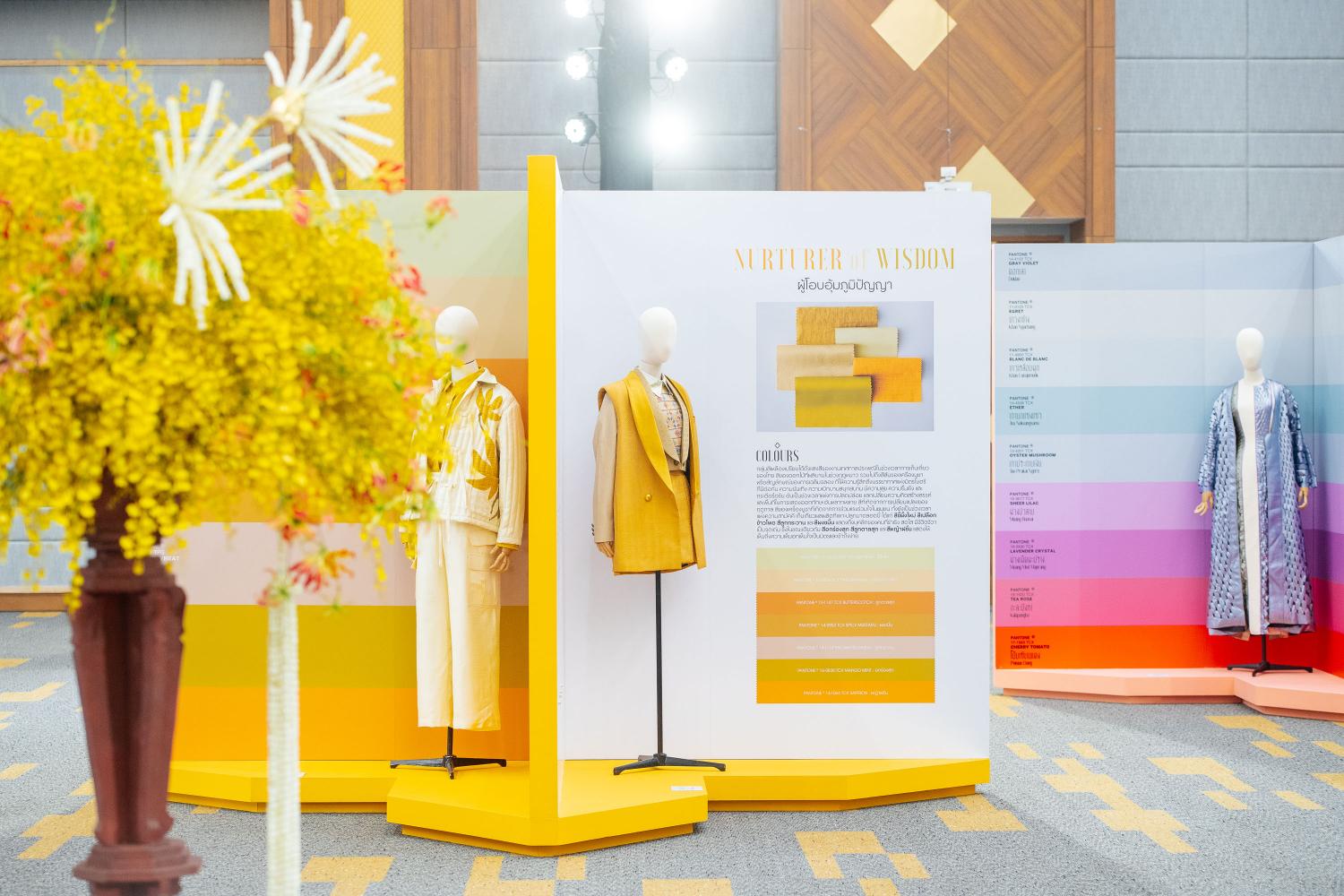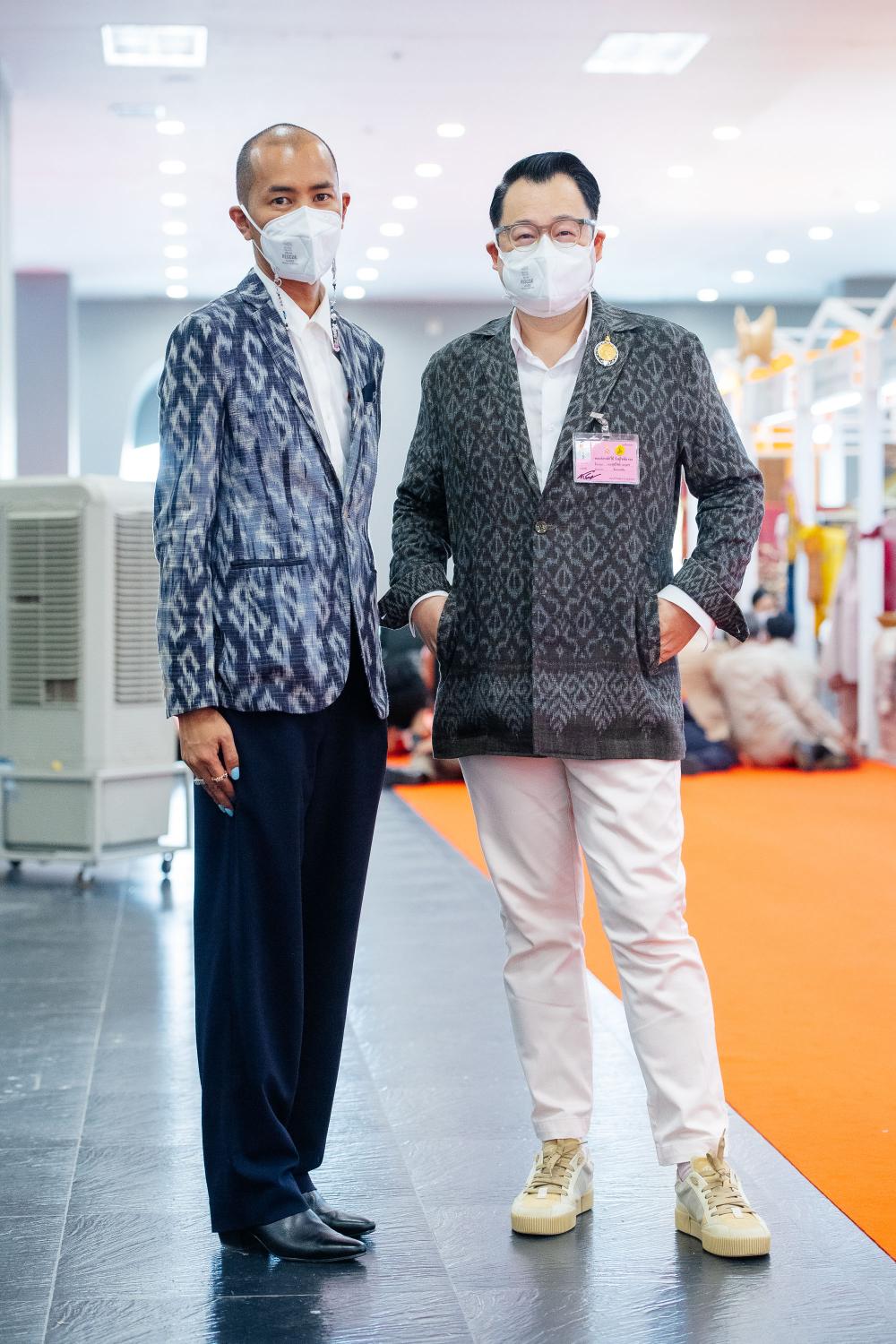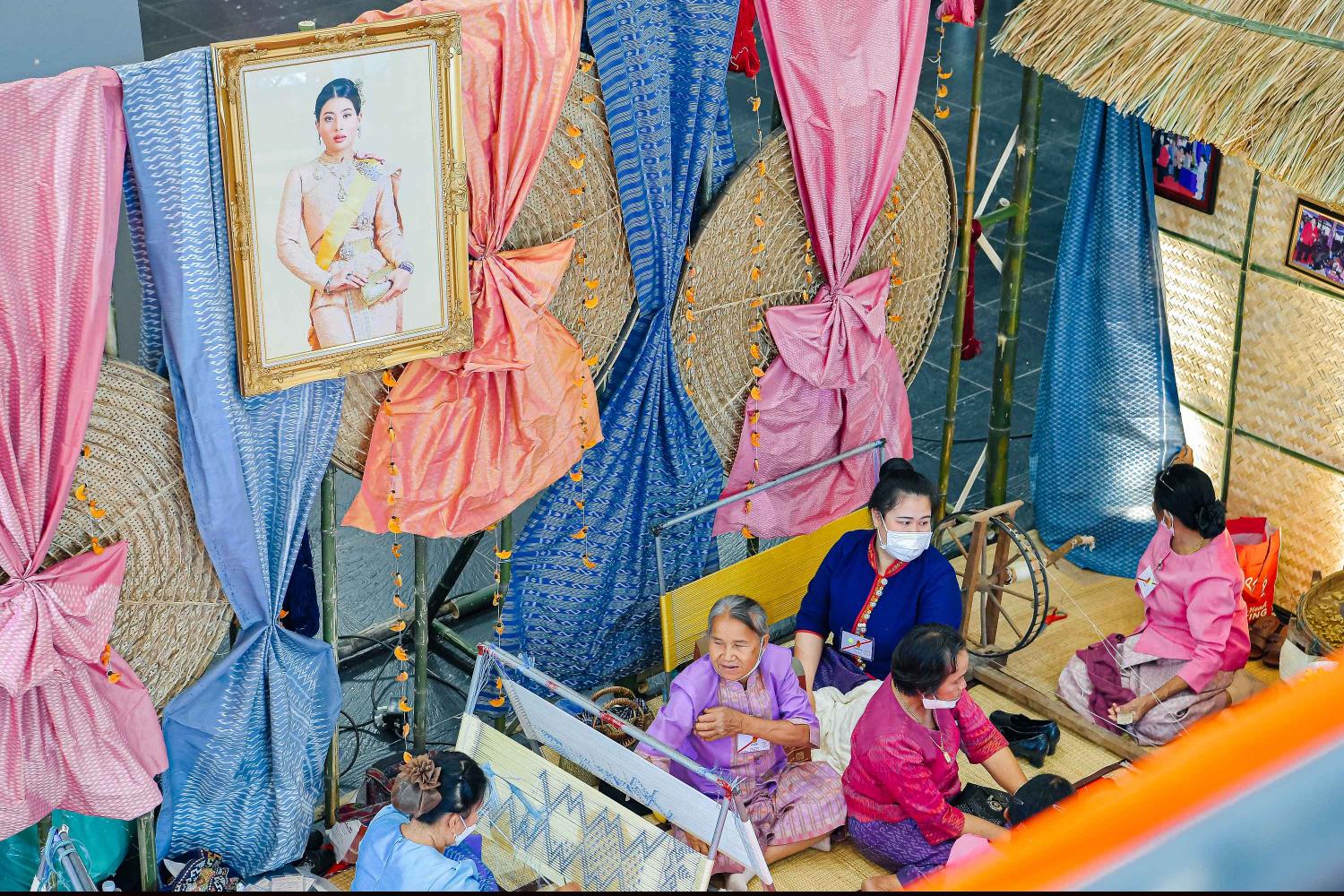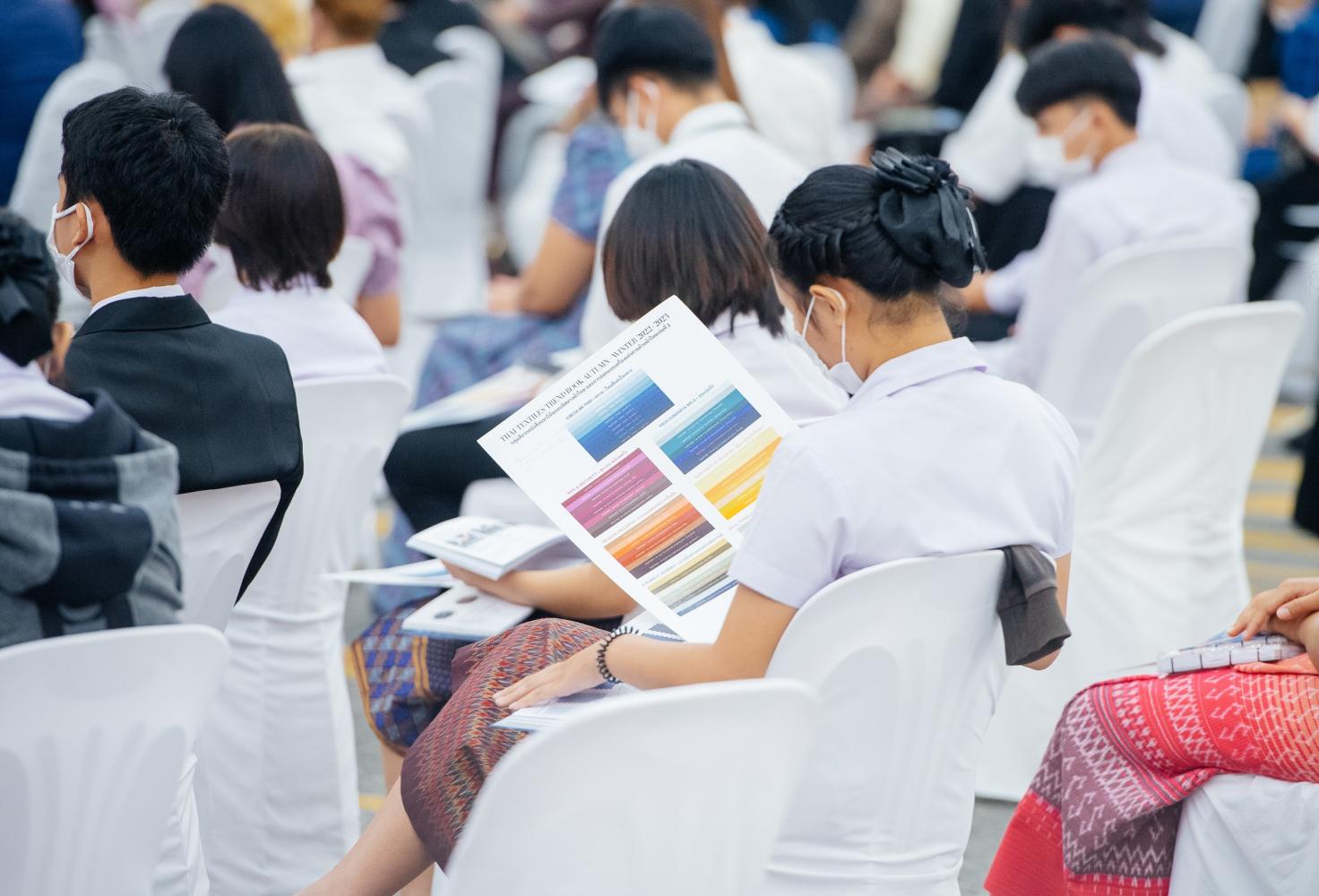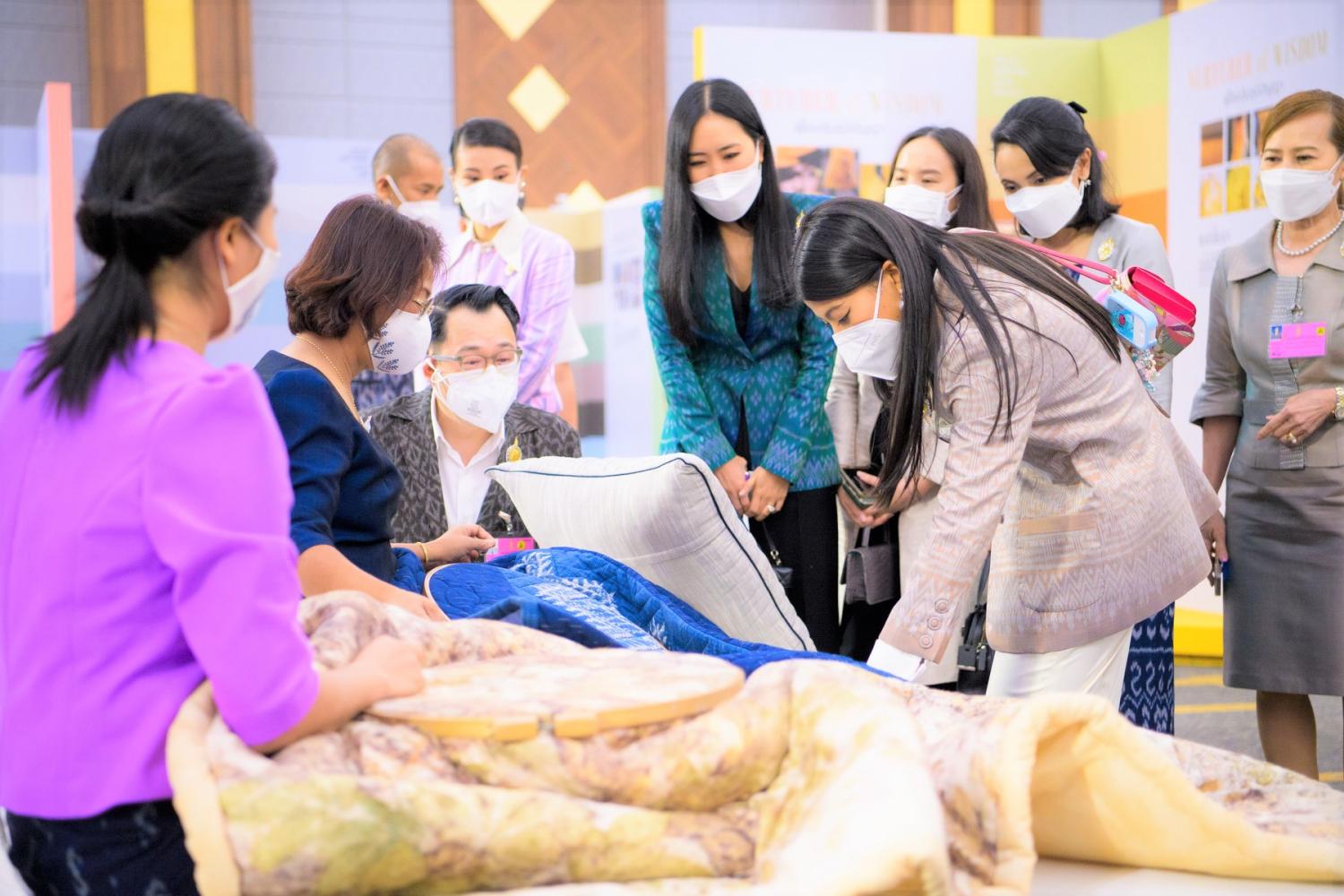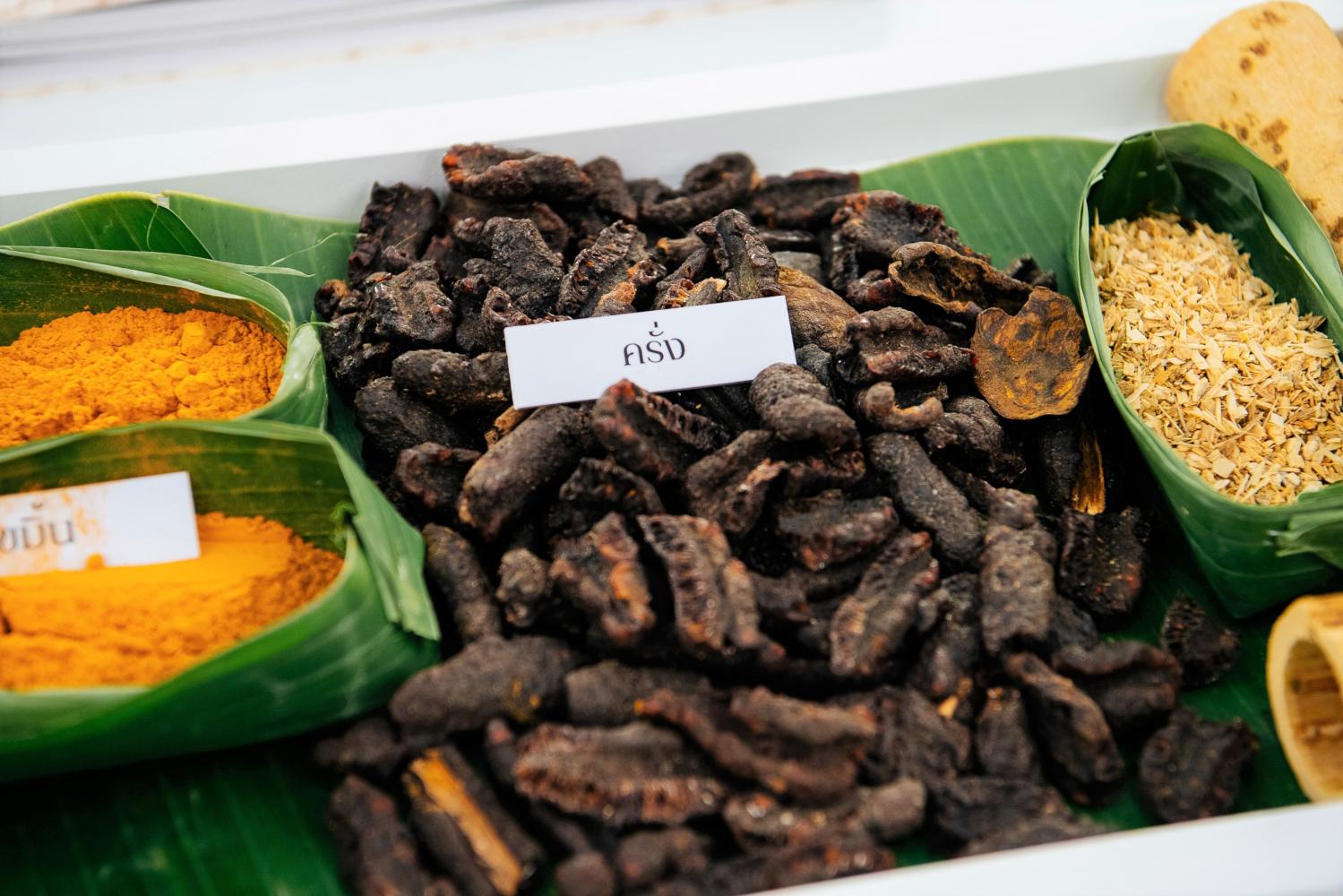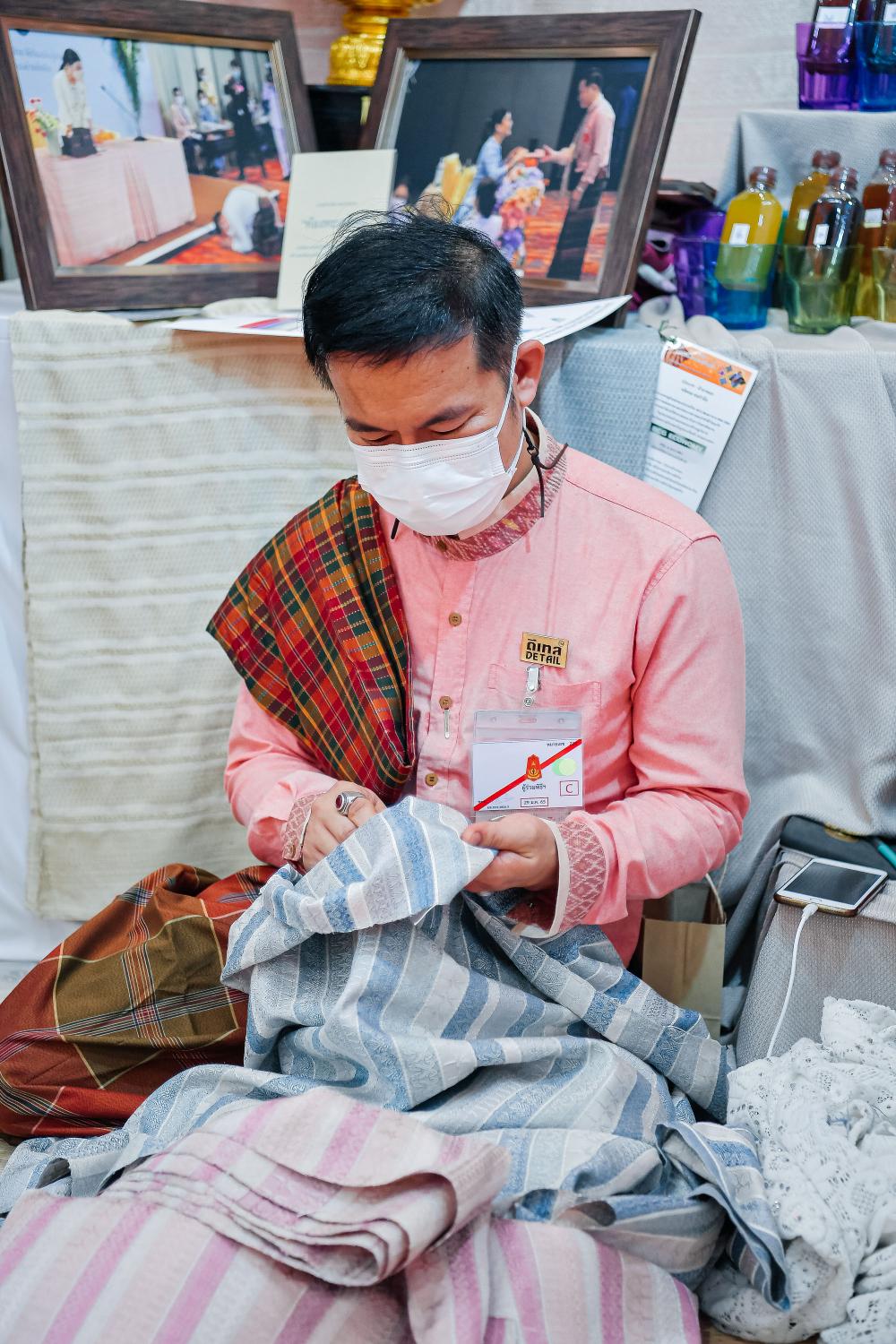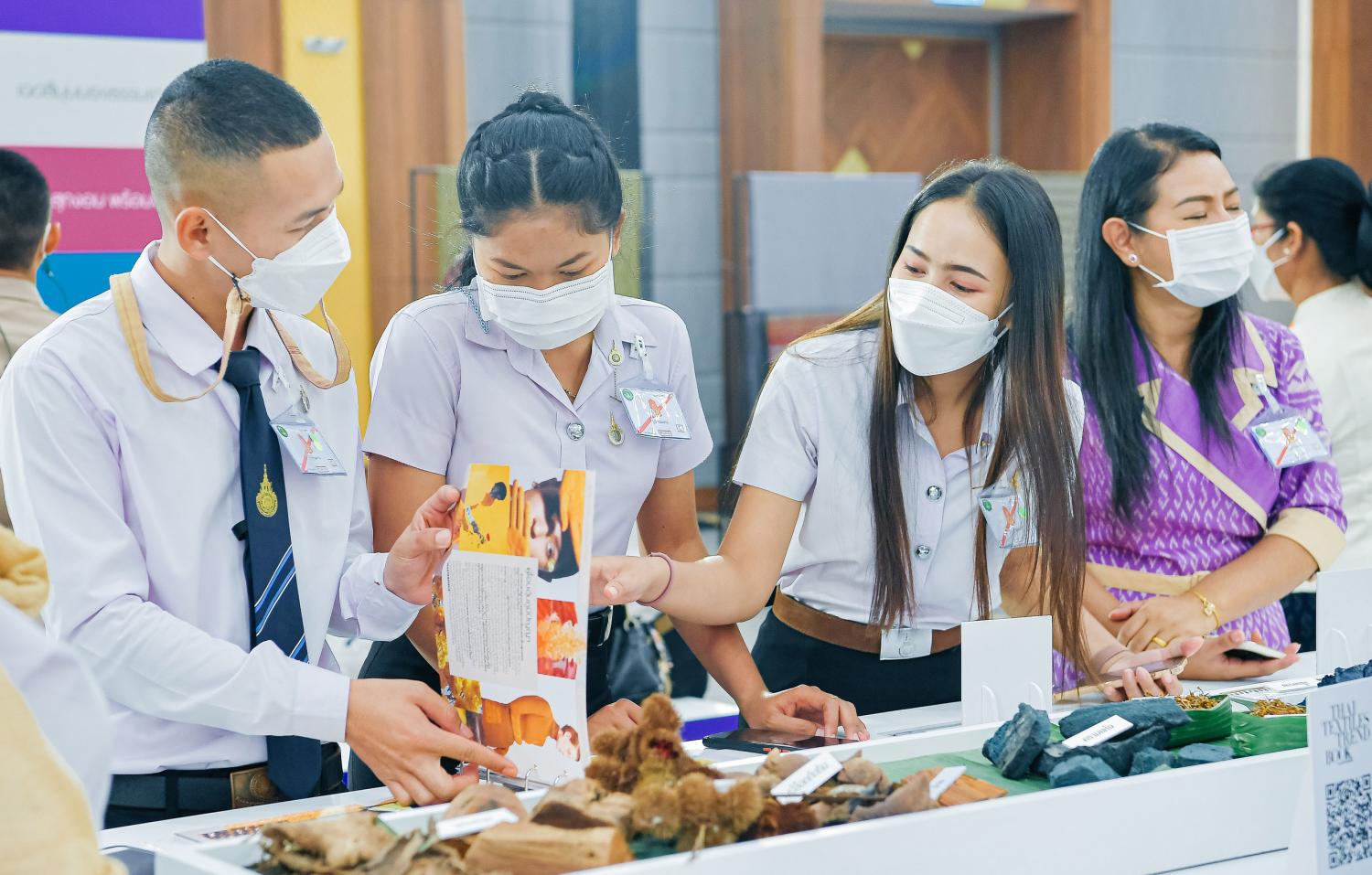With a devotion to the art and craft conservation of regional Thai textiles, HRH Princess Sirivannavari Nariratana Rajakanya recently presided over the opening of the "Thai Textiles Trend Book Autumn/Winter 2022-2023 And Seminar", hosted at Iconsiam as part of the "Promoting The Image Of Thai Textiles To The World 2021" project.
It's a collaboration between the Department of Cultural Promotion, Ministry of Culture and the Centre for Academic Services, Srinakharinwirot University, to promote and share knowledge of Thai textiles and design trends in an attempt to make them more contemporary.
The event also featured an exhibition on textile trends and design by 12 leading Thai designers, as well as textile products from the Support Foundation and handicrafts from northeastern communities. Princess Sirivannavari addressed a seminar titled "Promoting The Image Of Thai Textiles To The World" in the second trend book, in which six colour palettes are presented as a guideline for the production of Thai textiles for the contemporary market.
"We mainly discussed textile patterns in the first issue and the second issue for the autumn/winter 2022-2023 collection and it emphasises colour palettes and natural dyes to reduce dependence on chemical dyes to make it more friendly to humans and the environment. Also known as 'Circular Colours', this is now a global trend, and when adapted to the Thai context, we have called it 'Circular Thai', " she stated.
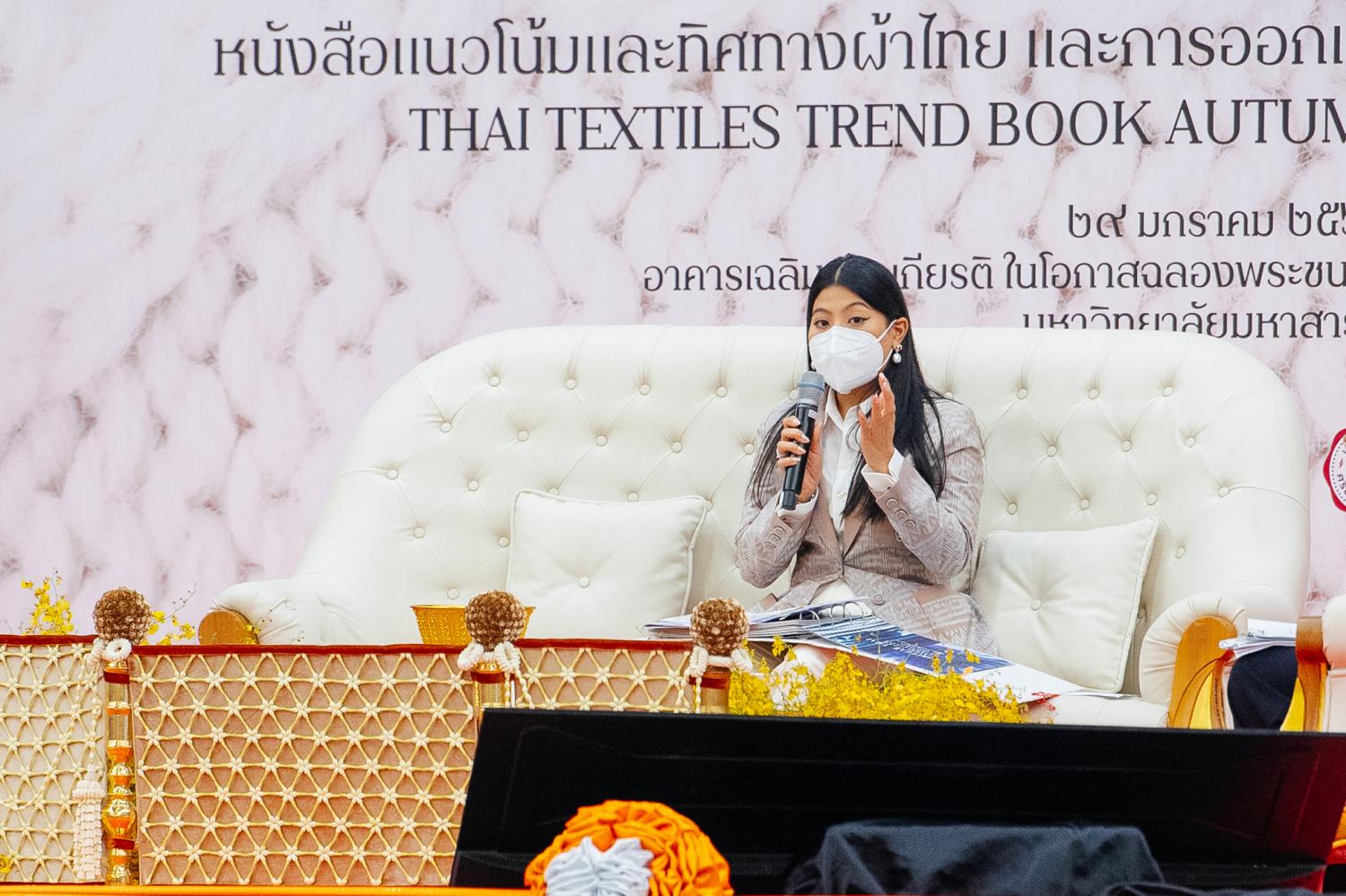
"This is based on the use of local raw materials, particularly indigo which is used globally in Japan, the US and India as a cold extraction dye. Colours may vary according to the climate and geographical environment. In Thailand, indigo is considered the 'King of Dye', or the heart of dye. When combined with other raw materials such as lac, marigolds, ficus, coconut husks, jackfruit wood, it will yield a variety of shades that can be grouped into six palettes, from magenta, navy, green and brown to yellow and grey. The colours are then numbered following international standards and can replace chemical dyes. It has all been compiled in this book."
The book also introduces six basic Thai textile weaving techniques, including yok dork brocade, khit diamond brocade, chok discontinuous supplementary weft technique, embroidery, mudmee tie-dye, don stitching, koh or luang (hook and dovetail), and patchwork.
But this year, the emphasis is mainly on two techniques -- patchwork and don stitching --which are best suited for winter collections. Patchwork is found in the North, especially among the various hilltribes, while don stitching can be found in several regions and is often used to make quilts or sports outfits.
"Fashion terminology should be constantly repeated so that students or industry professionals become familiar with the terms. The information can be found in this issue of the trend book," she added.
The event was joined by a group of fashion gurus and textile specialists such as managing editor Kullawit Laosuksri from Vogue Thailand, Thai textile expert Thananrat Thanasedtakarn and Wisharawish Akarasantisook.
